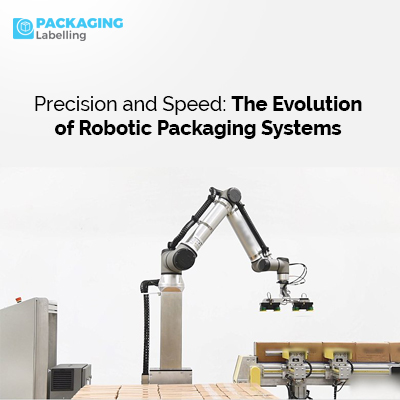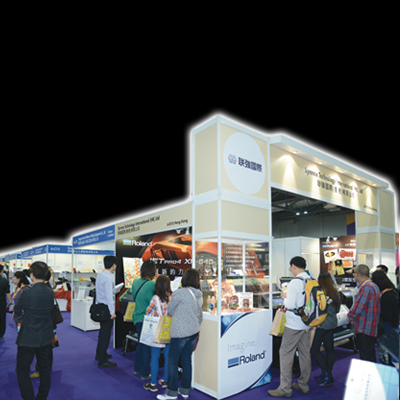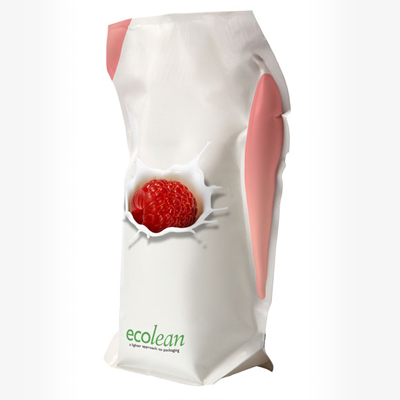Precision and Speed: The Evolution of Robotic Packaging Systems

Introduction:
Innovation has transformed the landscape of packaging systems, propelling the evolution of robotic technology in the manufacturing industry. Witness the exceptional combination of precision and speed in cutting-edge robotic packaging systems. These state-of-the-art machines have revolutionized traditional packaging methods, providing unmatched efficiency and accuracy in the production process.
Eliminating the need for manual labor, robotic packaging systems incorporate advanced software and high-resolution cameras that deliver precise and flawless packaging solutions. From delicate products requiring gentle handling to heavy goods demanding robust packaging, these systems effortlessly cater to diverse requirements without compromising on quality.
By eradicating human errors and reducing production downtime, robotic packaging systems offer immense cost savings to businesses. Their adaptability makes them easily programmable for different product types and packaging formats, ensuring optimal function across a wide range of applications.
Stay ahead in the competitive manufacturing landscape by embracing the innovative prowess of robotic packaging systems tirelessly pushing boundaries to achieve unrivaled precision and unparalleled speed.
| Also Read: Innovative Solutions: Robotic Packaging in Modern Manufacturing |
I. The Benefits of Robotic Packaging Systems
Robotic packaging systems offer a multitude of benefits to manufacturers, making them an indispensable asset in the production process. Firstly, these systems provide unmatched precision, ensuring that every product is handled with utmost accuracy. The high-resolution cameras integrated into the robots capture detailed images, allowing the machines to identify and handle products flawlessly. This precision eliminates human errors and ensures consistent packaging quality, reducing the risk of damaged products or customer complaints.
Secondly, robotic packaging systems significantly enhance the speed of packaging operations. With their lightning-fast processing capabilities, these machines can perform tasks at a much higher rate than human workers. This increased speed translates into improved productivity and efficiency, allowing manufacturers to meet tight deadlines and fulfill high-demand requirements without compromising on quality. The ability of robotic systems to consistently maintain optimal speed throughout the production process ensures a smooth and uninterrupted workflow, minimizing production downtime.
Furthermore, robotic packaging systems offer substantial cost savings for businesses. By eliminating the need for manual labor, manufacturers can reduce their workforce and allocate resources to other areas of the business. This reduction in labor costs, coupled with the elimination of human errors, translates into significant cost savings over time. Additionally, robotic systems operate with high energy efficiency, minimizing energy consumption and further reducing operational costs.
The benefits of robotic packaging systems include unparalleled precision, enhanced speed, and substantial cost savings. By leveraging these cutting-edge machines, manufacturers can elevate their production processes to new heights of efficiency and productivity.
II. Evolution of Robotic Packaging Systems
The evolution of robotic packaging systems has been a result of continuous technological advancements in the manufacturing industry. Over the years, these systems have undergone significant transformations, improving their capabilities and functionalities. Let's take a closer look at the key milestones in the evolution of robotic packaging systems.
Early Beginnings and Basic Automation
The journey of robotic packaging systems began in the early 1960s when the first industrial robots were introduced. These early robots were basic in functionality and had limited capabilities. They were primarily used for repetitive tasks, such as palletizing and sorting, but lacked the ability to perform complex packaging operations.
Integration of Vision Systems
The next major milestone in the evolution of robotic packaging systems was the integration of vision systems. High-resolution cameras and intelligent software were incorporated into the robots, enabling them to recognize and handle products with precision. These vision systems revolutionized packaging operations by eliminating human errors and ensuring flawless packaging.
Advanced Programming and Machine Learning
With the advent of advanced programming and machine learning algorithms, robotic packaging systems became more intelligent and adaptable. Manufacturers could program the robots to handle different products and packaging formats, making them highly versatile. The ability of these systems to learn from past packaging operations and adjust their performance accordingly further enhanced their efficiency and accuracy.
Collaborative Robots
The latest development in the evolution of robotic packaging systems is the emergence of collaborative robots, also known as cobots. Unlike traditional robots, cobots are designed to work alongside human workers, assisting them in packaging operations. These robots are equipped with advanced safety features, such as force sensors and collision detection, ensuring a safe working environment for human workers. The introduction of cobots has further improved the efficiency and productivity of packaging operations, as they can handle tasks that require human dexterity and judgment.
III. How Robotic Packaging Systems Improve Precision?
Robotic packaging systems are equipped with advanced technologies that significantly improve the precision of packaging operations. Let's explore the key factors that contribute to the enhanced precision of these systems.
High-Resolution Cameras
One of the essential components of robotic packaging systems is the incorporation of high-resolution cameras. These cameras capture detailed images of the products, allowing the robots to identify and handle them accurately. The high resolution ensures that even the smallest details are captured, enabling the robots to make precise movements and adjustments during the packaging process.
Intelligent Software and Algorithms
In addition to high-resolution cameras, robotic packaging systems utilize intelligent software and algorithms to enhance precision. These software systems analyze the captured images and make real-time decisions based on pre-programmed parameters. By leveraging advanced algorithms, the robots can identify product dimensions, orientation, and packaging requirements, ensuring that each item is handled correctly.
Robotic Arms and Grippers
The robotic arms and grippers of packaging systems play a crucial role in improving precision. These components are designed to mimic human movements and dexterity, allowing them to handle products with care and accuracy. The precision of the robotic arms and grippers ensures that each product is picked, placed, and sealed correctly, minimizing the risk of damage or misalignment.
Feedback Systems
To further enhance precision, robotic packaging systems incorporate feedback systems that monitor and adjust the performance of the robots. These systems analyze data from sensors, cameras, and other components to ensure that the robots are operating within the desired parameters. Any deviations or errors are immediately identified and corrected, ensuring consistent precision throughout the packaging process.
The combination of high-resolution cameras, intelligent software, robotic arms, grippers, and feedback systems contributes to the improved precision of robotic packaging systems. These technologies work together seamlessly to ensure that each product is handled with utmost accuracy and packaged flawlessly.
IV. How Robotic Packaging Systems Enhance Speed?
Speed is a critical factor in the competitiveness of manufacturing operations, and robotic packaging systems excel in enhancing the speed of packaging processes. Let's delve into the key elements that contribute to the high speed of these systems.
Rapid Processing Capabilities
Robotic packaging systems are equipped with rapid processing capabilities, enabling them to perform tasks at a much higher rate than human workers. These machines can process vast amounts of data, analyze images, and make decisions in real-time. The ability to process information quickly translates into faster packaging operations, significantly improving productivity and efficiency.
Continuous Operation
Unlike human workers who may require breaks or rest periods, robotic packaging systems can operate continuously without fatigue or downtime. This continuous operation ensures a consistent workflow, minimizing interruptions and delays in the packaging process. The ability of robotic systems to maintain optimal speed throughout the production process results in a streamlined and efficient operation.
Parallel Processing
Robotic packaging systems can perform multiple tasks simultaneously, thanks to their parallel processing capabilities. These machines can handle various packaging operations concurrently, significantly reducing the time required for packaging tasks. By multitasking, robotic systems optimize the use of resources and maximize productivity, enabling manufacturers to meet tight deadlines and fulfill high-volume orders efficiently.
Fast and Precise Movements
The speed of robotic packaging systems is further enhanced by their fast and precise movements. The robotic arms and grippers of these systems are designed to execute swift and accurate motions, ensuring efficient handling of products. The ability of the robots to precisely pick, place, sort, and seal items at high speeds eliminates bottlenecks in the packaging process, resulting in faster overall production.
The rapid processing capabilities, continuous operation, parallel processing, and fast and precise movements of robotic packaging systems contribute to their enhanced speed. These systems excel in meeting the demands of high-speed packaging operations, allowing manufacturers to achieve optimal efficiency and productivity.
V. Challenges and Considerations when Implementing Robotic Packaging Systems
While the implementation of robotic packaging systems offers numerous benefits, there are also challenges and considerations that manufacturers need to address. Let's explore some of the key challenges and considerations when integrating these systems into the production process.
Initial Investment
One of the primary challenges when implementing robotic packaging systems is the initial investment required. These systems can be costly, and manufacturers need to carefully consider their budget and return on investment. However, it's important to note that the long-term cost savings and increased productivity offered by robotic systems often outweigh the initial investment.
Integration with Existing Systems
Integrating robotic packaging systems with existing production systems can be a complex process. Manufacturers need to ensure compatibility between the robotic systems and other machinery, software, and infrastructure. Proper planning and coordination are crucial to seamlessly integrate the robotic systems into the production process without disrupting operations.
Training and Workforce Adaptation
Implementing robotic packaging systems may require training and adaptation for the existing workforce. Employees need to familiarize themselves with the operation and maintenance of the robotic systems. Adequate training programs should be in place to ensure the smooth transition and acceptance of the new technology by the workforce.
Maintenance and Support
Robotic packaging systems require regular maintenance to ensure optimal performance. Manufacturers need to have a plan in place for routine maintenance, repairs, and technical support. Partnering with reliable suppliers and service providers is crucial to minimize downtime and ensure the longevity of the robotic systems.
Safety Considerations
Safety is of utmost importance when integrating robotic packaging systems into the production process. Proper safety measures should be in place to protect both human workers and the robotic systems. Manufacturers need to assess and mitigate potential risks, implement safety protocols, and provide training to ensure a safe working environment.
By addressing these challenges and considerations, manufacturers can successfully implement robotic packaging systems and harness their full potential.
VI. Future Trends in Robotic Packaging Systems
As technology continues to advance at a rapid pace, the future of robotic packaging systems holds exciting possibilities. Let's explore some of the key trends that are expected to shape the evolution of these systems.
Artificial Intelligence and Machine Learning
Artificial intelligence (AI) and machine learning (ML) are expected to play a significant role in the future of robotic packaging systems. AI-powered robots will be capable of learning from past packaging operations, continuously improving their performance, and making real-time decisions based on data analysis. Machine learning algorithms will enable the robots to adapt to changing packaging requirements, further enhancing their versatility and efficiency.
Enhanced Sensing and Perception Technologies
Advancements in sensing and perception technologies will enhance the capabilities of robotic packaging systems. These systems will be equipped with advanced sensors that can detect and analyze various aspects of the packaging process, such as product dimensions, weight, and quality. This enhanced sensing and perception will enable the robots to make precise adjustments and optimize packaging operations.
Collaborative Robotics
Collaborative robotics, or cobots, will continue to gain popularity in the future of robotic packaging systems. These robots will work alongside human workers, assisting them in packaging operations and enhancing efficiency. Cobots will be equipped with advanced safety features to ensure a safe working environment, enabling manufacturers to combine human dexterity and judgment with robotic precision and speed.
Internet of Things Integration
The integration of robotic packaging systems with the Internet of Things (IoT) will enable seamless connectivity and data exchange. These systems will be able to communicate with other machinery and systems, optimizing the packaging process and providing valuable insights for continuous improvement. IoT integration will enable manufacturers to monitor and control robotic systems remotely, enhancing operational efficiency and reducing downtime.
Sustainability and Green Packaging
With increasing environmental concerns, the future of robotic packaging systems will focus on sustainability and green packaging. These systems will be designed to minimize packaging waste and optimize material usage. Robots will be programmed to handle recyclable and biodegradable packaging materials, reducing the environmental footprint of the packaging process.
These future trends in robotic packaging systems will further elevate the efficiency, precision, and speed of packaging operations, enabling manufacturers to stay ahead in the competitive landscape.
VII. Key Players in the Robotic Packaging Systems Industry
The robotic packaging systems industry is witnessing significant growth, with several key players leading the way in innovation and technological advancements. Let's explore some of the prominent companies that are shaping the industry.
ABB Ltd.
ABB Ltd. is a global leader in robotics, automation, and power technologies. The company offers a range of robotic packaging systems designed for various industries, including food and beverage, pharmaceuticals, and consumer goods. ABB's robotic systems are known for their precision, speed, and adaptability, providing manufacturers with efficient and reliable packaging solutions.
FANUC Corporation
FANUC Corporation is another major player in the robotic packaging systems industry. Known for its expertise in industrial automation, FANUC provides advanced robotic solutions tailored for packaging applications. Their systems are acclaimed for high-speed operation, accuracy, and versatility, catering to the diverse needs of industries like automotive, electronics, and food packaging. FANUC's commitment to continuous innovation and robust support services further solidifies its position as a key player in the market.
KUKA AG: KUKA AG is a global leader in automation solutions, offering advanced robotic systems for packaging applications across industries. Their robots are known for their flexibility, high performance, and reliability, making them a preferred choice for manufacturers seeking efficient packaging solutions.
Yaskawa Electric Corporation: Yaskawa Electric Corporation is a prominent provider of industrial robots and automation solutions, including robotic packaging systems. Their robots are highly regarded for their precision, reliability, and speed, meeting the demanding requirements of various packaging operations.
Mitsubishi Electric Corporation: Mitsubishi Electric Corporation offers cutting-edge robotic packaging solutions designed to enhance productivity and product quality. Their range of robots is versatile and adaptable, catering to different packaging needs with efficiency and accuracy.
Universal Robots: Universal Robots specializes in collaborative robots (cobots) that play a crucial role in packaging processes. Their cobots are known for their user-friendly interface, flexibility, and safety features, making them ideal for small and medium-sized enterprises looking to automate packaging tasks.
Schneider Electric SE: Schneider Electric SE provides comprehensive automation and control solutions, including robotics for packaging applications. Their integrated systems offer enhanced efficiency, reliability, and scalability, empowering manufacturers to optimize their packaging operations effectively.
Conclusion:
The evolution of robotic packaging systems represents a paradigm shift in the manufacturing landscape, where precision and speed converge to redefine efficiency and productivity. These cutting-edge technologies, driven by advanced software, high-resolution cameras, and intelligent algorithms, have revolutionized traditional packaging methods.
By embracing robotic packaging systems, manufacturers can achieve unmatched precision in handling products, ensuring consistent quality and reducing the risk of errors. The speed and efficiency of these systems enable companies to meet tight deadlines, fulfill high-demand requirements, and optimize their production processes.
Despite challenges such as initial investment and workforce adaptation, the benefits of robotic packaging systems, including cost savings, improved productivity, and sustainability, outweigh the implementation hurdles. As the industry progresses, future trends like artificial intelligence, collaborative robotics, IoT integration, and green packaging will further enhance the capabilities of robotic systems.
Key players like ABB Ltd., FANUC Corporation, KUKA AG, Yaskawa Electric Corporation, Mitsubishi Electric Corporation, Universal Robots, and Schneider Electric SE continue to drive innovation, shaping the future of robotic packaging systems.
In conclusion, the evolution of robotic packaging systems signifies a transformative era in manufacturing, where precision, speed, and innovation converge to propel businesses towards unparalleled efficiency and success.









